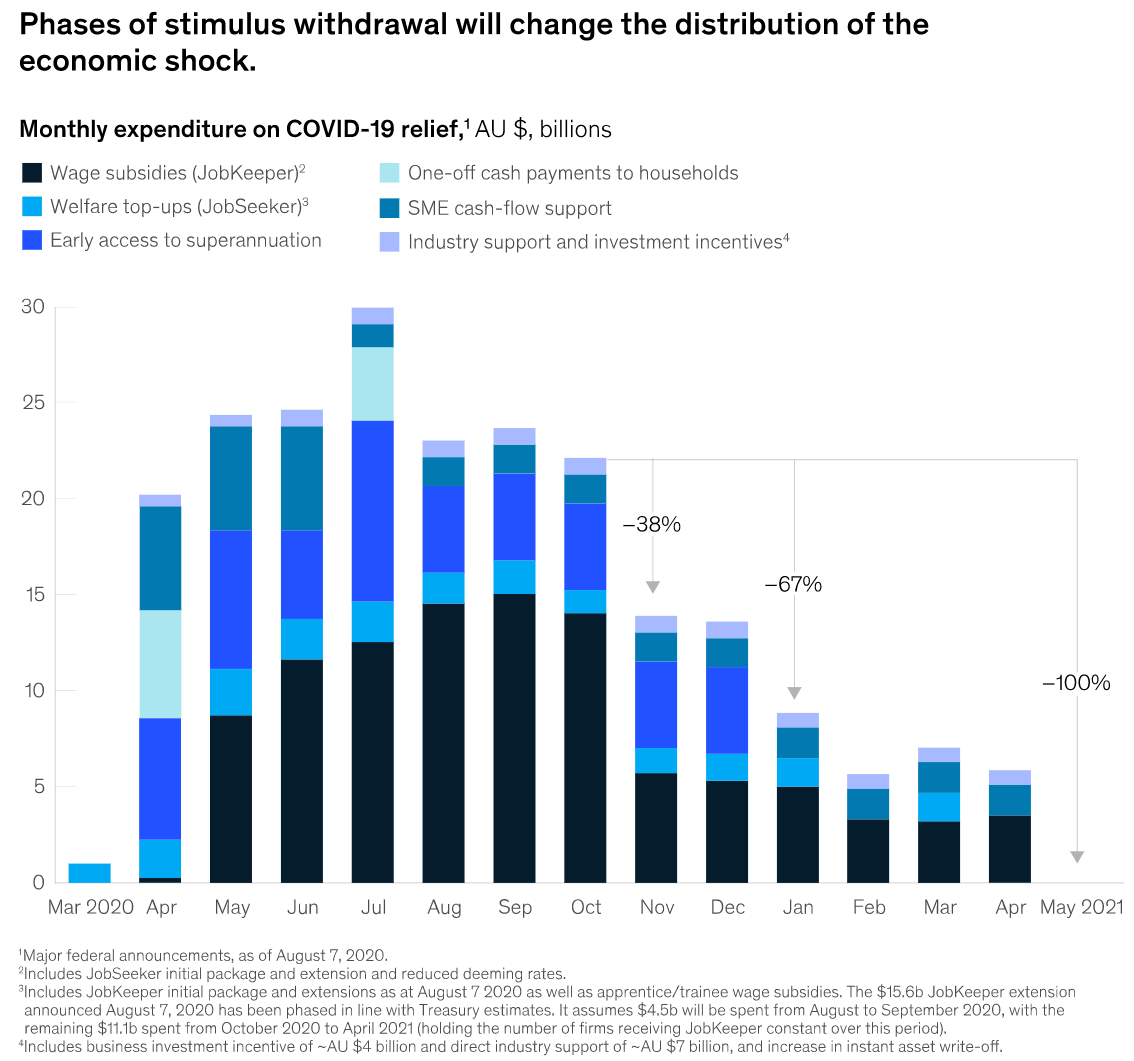Data released this month suggests Australian households are deleveraging at a furious pace.
First, the latest credit aggregates data from the Reserve Bank of Australia (RBA) revealed that the stock of personal credit collapsed by 12.5% in the year to August – the biggest decline in recorded history:
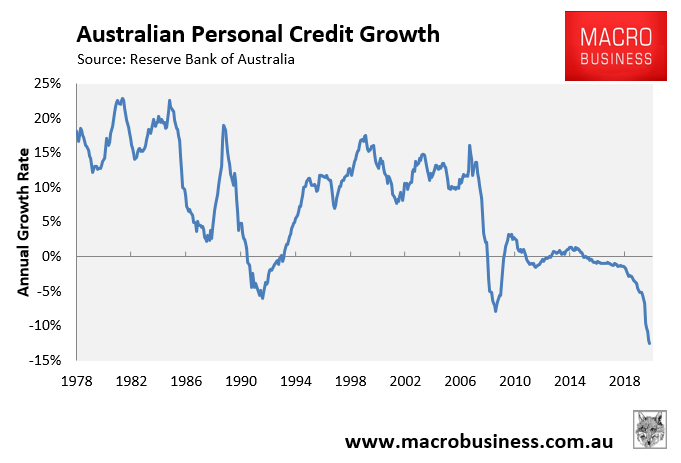
Second, new car sales data from the Federal Chamber of Automotive Industries (FCAI) revealed that sales declined for the 30th consecutive month in September, hitting lows not see since October 2003 when Australia’s population was around 6 million (30%) smaller:
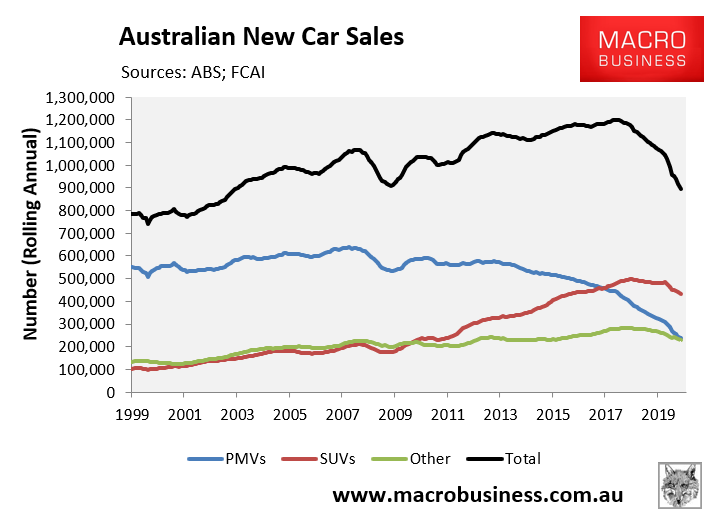
On Friday, the Australian Bureau of Statistics (ABS) released its lending indicators data for August, which revealed another decline in personal finance commitments:
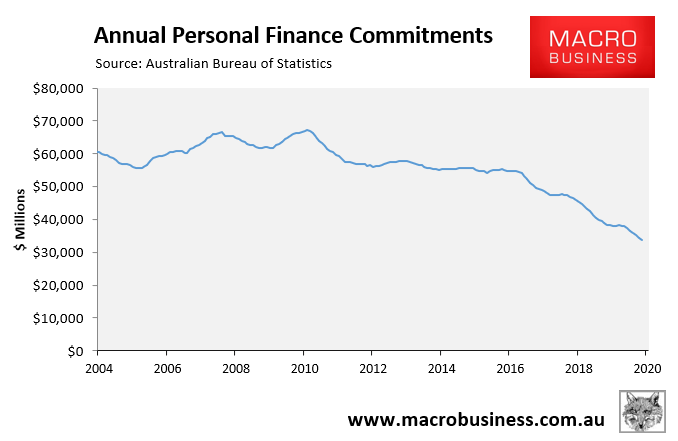
As shown above, new personal finance commitments fell to their lowest level on record, down 12% year-on-year and 40% below the long-term average.
This data portends further weakness for the Australian economy given household consumption accounts for just over half of final demand and plummeted by 12.7% in the year to June:
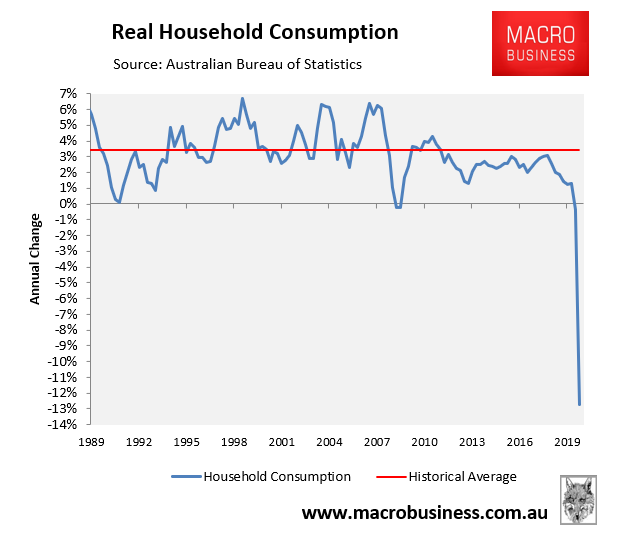
This followed a jump in the household savings rate to its highest level in nearly 50 years:
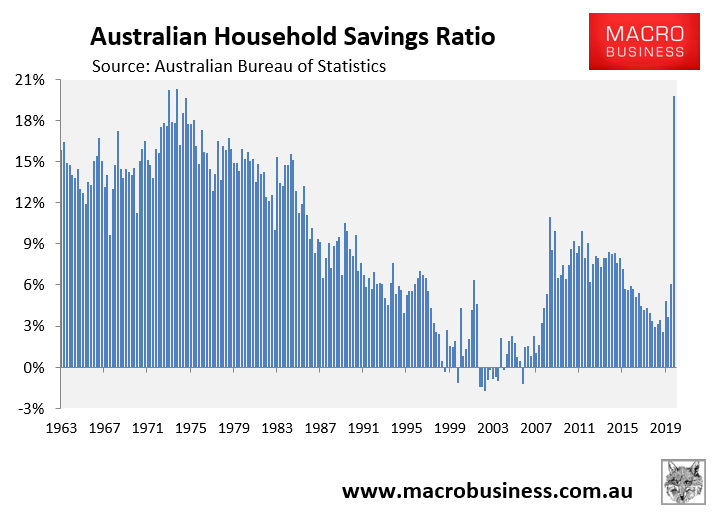
The problem for the Australian economy going forward is that households are facing a massive contraction in disposable income as emergency income supports are unwound:
There will be some offset to the chart above in the form of tax cuts, but not much.
Australian households are caught in their very own paradox of thrift, which means that the federal government will need to intervene directly in the economy to support demand.

